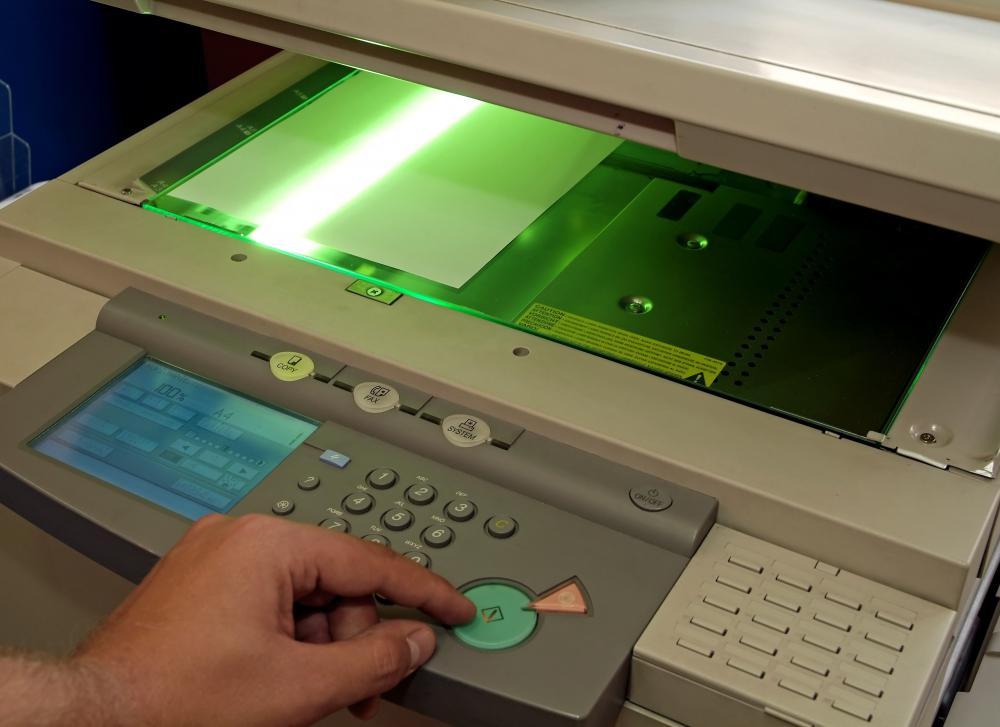At SmartCapitalMind, we're committed to delivering accurate, trustworthy information. Our expert-authored content is rigorously fact-checked and sourced from credible authorities. Discover how we uphold the highest standards in providing you with reliable knowledge.
How can You Tell if Money is Counterfeit?
Many people who work with cash on a regular basis develop a feel for the difference between legitimate and counterfeit money. Others may receive an occasional bill in change that simply doesn't feel right. There are a number of ways to tell if money is counterfeit, but it helps to recognize the safeguards and counter-measures built into legitimate paper currency as well. Even the most sophisticated counterfeiter is likely to miss something.
Real money is generally printed on special paper with a high amount of cotton fiber. This allows paper currency to be folded several thousand times without tearing. In many cases, counterfeiters use a cheaper form of bond paper that is not nearly as durable. If the paper is not treated properly, the ink will bleed into the fibers and create blurred or blotchy images. A visual inspection between a suspicious bill and a known bill should reveal any obvious printing errors or paper quality differences.

Another way to tell if money is counterfeit is to look for special security measures built into real paper currency. Holding the bill up to a light source should reveal a watermark, essentially a shadow image depicted in the center. This watermark is created during the paper making process and cannot be duplicated by a photocopier. The lack of a discernible watermark should be an indication the money is fake.

In US currency, there should also be an embedded security strip that denotes the denomination of the bill. This is another anti-counterfeiting measure added to the bill during the printing process and cannot be seen in reflective light. By holding the bill up to a light source, you should be able to see and read the strip along one side. This process of implanting a plastic foil strip into the actual paper took almost a decade to perfect, so counterfeiters would have a very difficult time duplicating it without the specialized equipment.

Many places, such as grocery stores, retail outlets, and restaurants, that deal with large amounts of cash have other ways to tell if money is counterfeit. A pen loaded with a special reactive ink can be swiped across a suspicious bill to determine if it is real or fake. If a visible mark appears, the money is considered legitimate. If the mark remains invisible, this indicates the paper has not been treated with the proper chemicals and is most likely counterfeit. These pens can be purchased at many office supply stores for personal use as well.

Real US currency also contains special inks that change color when viewed at different angles. If a suspected bill's government seal and other denominational indicators do not change from black to green when viewed at an angle, the bill may very well be counterfeit. Even the most sophisticated photocopiers or offset printers can have trouble reproducing extremely fine print, so an examination of a bill under a magnifying glass should reveal small letters hidden within the background scrolls and images. If these microscopic letters are missing or unreadable, the bill is most likely counterfeit.
There are other ways to tell if a particular bill is counterfeit or not, but it may simply be safer to turn suspicious money over to law enforcement officers or bank officials for further investigation. In general, counterfeiters tend to concentrate their efforts on larger denominations, such as $10s, $20s, $50s, or $100s in US currency. Small purchases made with exceptionally large currencies may be an effort to launder a counterfeit bill by receiving legitimate change, for example. This is a red flag for many retailers, so don't be surprised if your own larger bills are examined very closely when making cash purchases.
AS FEATURED ON:
AS FEATURED ON:














Discussion Comments
Do people even bother to make counterfeit coins? It seems that would be a lot of trouble for very little money, unless you had a ton of them. If they do make them, how can you tell the real from the fake?
Counterfeiting money must be getting harder and harder. There have been a lot of complex details added to bills over the years that must be incredibly hard to mimic, if not impossible.
I remember the first time I saw a $20 bill with what seemed like iridescent ink. There were so many colors in it, and they changed as I turned it at different angles.
There were also images hidden seemingly inside the bill. I couldn't see them if I just looked at the bill flat from either side, but I could find them when I held it up to the light.
@Oceana – Tell me about it! Who has time to study all the watermarks and hidden symbols in money, especially if there is a line of customers building up?
I've never had a fake bill, so I don't know what one would look or feel like. I just hope I wouldn't be in too much trouble if I unknowingly spent one!
I didn't know that cashiers were attempting to detect counterfeit money when they marked my $100 bill with a marker. I actually thought that this must be somehow related to a system of storing the marked bills together and identifying them by the marks.
It does seem like an easy way to distinguish between the real and the fake. A quick mark of a pen is a lot simpler than a study of all the intricacies of such a bill.
What do you do with a money that was counterfeit??
I received a $5.00 bill that did not have the ghost image or water mark?
can you change the color of money with chemicals? if so which ones?
Post your comments